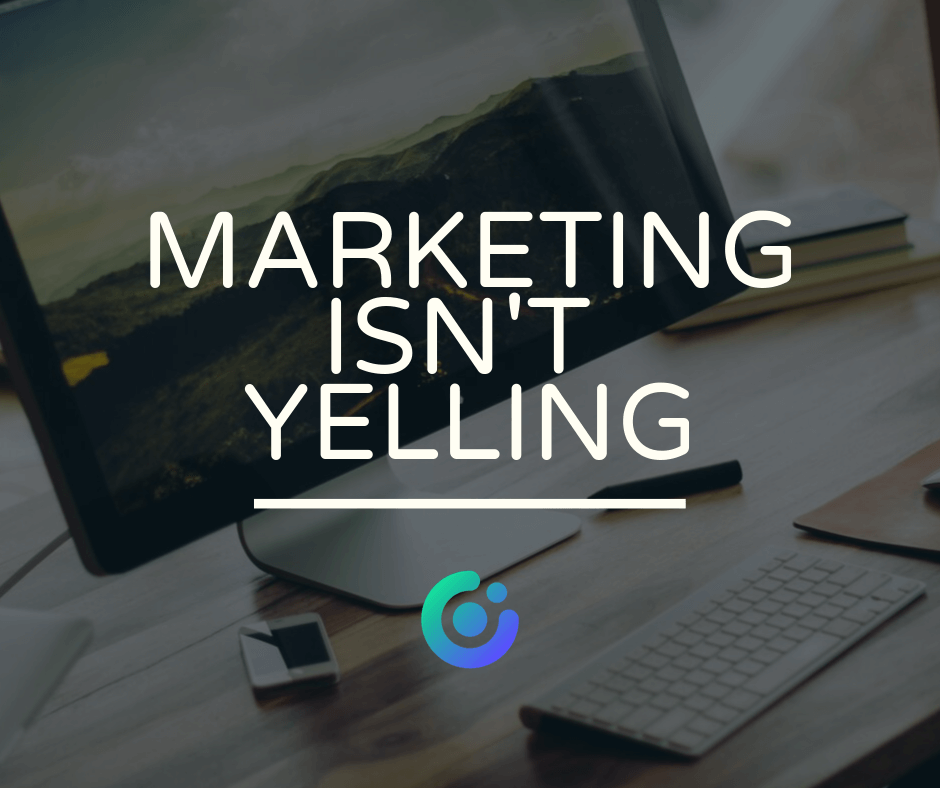
I love baseball and my wife and I live quite near Coors Field in Denver. Go Rockies!
We’ve been to a number of games and, among other things, have acquainted ourselves with some of the regulars who frequent the park. There’s one guy in particular who sparked a thought… I don’t know his name, we’ve never talked, but he wears a cardboard REPENT sandwich board and yells at the top of his lungs that we’re all sinners and are going to Hell. Presumably he’d like to either facilitate the process or mitigate it, but I’ll admit to not having investigated further. Which, really, gets to my point.
Regardless of one’s particular beliefs, I found myself musing on the marketing strategy in evidence.
Here he is trolling a crowd on their way into a baseball game – arguably a competing religion unto itself – and simply broadcasting his message without regard to buyer interest. I wonder what sort of success rate he enjoys. His impressions are no doubt in the thousands – impressive, given his ad budget! – but I wonder about bounce rate. Based on an admittedly poor sampling of data, my hunch is that he likely lands one customer in… uh… never.
Sort of, you know, like many of the websites, ads, and Facebook videos out there.
Not a one-way broadcast
I think a great many businesses in the world still think of marketing as a one-way broadcast. Yell your message out into the universe and at some point, when a potential customer wanders into earshot, your brand will spark their notice and they’ll call your sales team.
Sort of like seeing a billboard on a highway – you’re not filtering your audience beyond “people who can afford to drive cars in this particular city.” Even if someone is interested, they’ll have to remember your company name after they fight through traffic during their commute while distracted by other drivers, NPR, and the hot coffee they spilled on their lap. Billboards are dumb.
A business throws an ad out there – on a billboard, or perhaps a magazine ad – and hopes that sales will come. Sure, you can measure an uptick in customers over time based on an ad spend – tune the spending and maybe those sales numbers change – but we live in a new world.
That new world isn’t a static website – a static website is an electronic version of a dumb billboard.
Things have changed
The Web and today’s current technologies allow marketers to know a lot more about customers: which links they click, how long they read a page, what videos they watch, and so on. You don’t need to yell at random strangers.
You can yell at specific strangers.
And while a common, immediate reaction to such big-brotherly surveillance is visceral revulsion, think on it a bit: I resent having ads inappropriately shoved into my face. None of us like being yelled at or stalked. But when shopping for something – that’s different. I seek out brochures, information, and actively want to engage. It’s fun, even.
Through marketing automation tools like HubSpot, Adobe Marketo, Act-On, Pardot and others, we can gauge interest as visitors to websites consume information. Facebook, as questionable as much of its advertising practices are, does give companies access to unprecedented amounts of information about customers.
And, sure, that allows us to yell at specific people. Not sure who Mr. REPENT would target if he could, exactly… but the rest of us, presumably, would be able to target based on all sorts of entirely relevant, valid data points.
And that still misses the point completely.
Quit yelling
We all need to grow up. Three-year olds yell. Let’s use our ears, shall we?
Marketing isn’t about broadcasting blindly to the masses and hoping you can afford the advertising. Likewise it’s not about laser-targeting vulnerable people and brainwashing or browbeating them into remembering your product.
Today, marketing is about dialogue.
There’s a buzzword that was popular a few years ago that needs a bit of revival: permissions-based marketing.
The really incredible thing about the Internet is that it allows one-to-one exchanges. An individual can request some information – click on a link – and, voila!, be taken to a web page.
The buying experience has changed – when I’m interested in something, I seek out information. By the time I contact a sales person, I’ve likely already made my buying decision (or am very close).
Buyers today want to consume information about your company, unmolested, until they’re ready to engage in your sales process.
Subscribe to get the latest in your inbox.
Built with you in mind
Speak to one of our expert consultants about making sense of your data today. During
this free consultation, we'll address your questions, learn more about your business, and
make some immediate recommendations.



